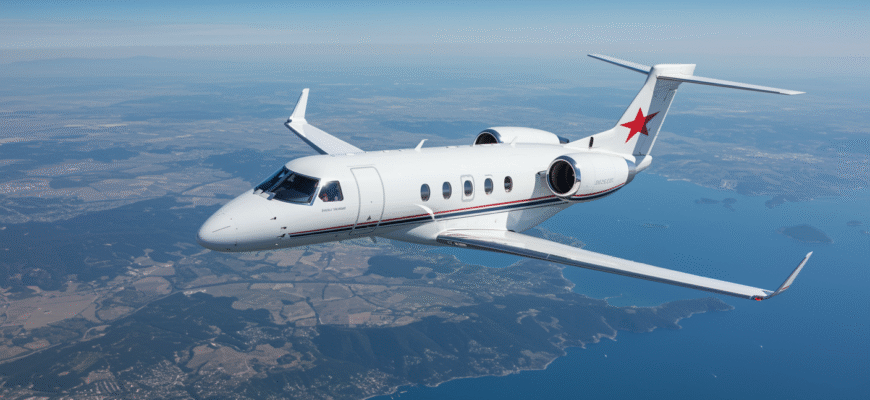It’s not just the rich who fly anymore—it’s anyone who can afford to disappear. And in the current year, Brazil has made that possible on a whole new level. The country has pulled ahead to become the second-largest private executive aviation market in the world, clocking over 33,000 private departures in just five months. That’s not a spike, that’s a movement. And with Carnival stretching across skies in February and Formula 1 Grand Prix weekends gaining even more celebrity firepower, jet bookings often hit capacity weeks in advance.
Much of this explosive growth orbits around two kings of the air—São Paulo and Rio de Janeiro. These cities aren’t just cultural centers anymore; they’re gateway runways to everything from rainforest resorts to ultra-discreet jungle villas. Charter activity around São Paulo’s Congonhas and Rio’s Santos Dumont airports sees massive demand from both new wealth and international power players—many drawn to Brazil’s blend of access and anonymity.
Demand tends to surge ahead of key events:
- Carnival: Custom jets outfitted like mini-clubs, complete with DJs and samba themes.
- Grand Prix Weekends: Celebs, influencers, and F1 entourages make race day a sky-bound frenzy.
- New Year’s in Rio: Expect last-minute bookings at triple the usual cost—if any jets are left at all.
Brazil’s private skies are crowded, intense, and only getting busier. And not just for business.
Who Is Actually Taking These Flights
Behind every flight manifest is a story. Not always a boardroom deal—sometimes it’s someone escaping one. The jet crowd in Brazil offers a wild, unpredictable snapshot of who really flies when money isn’t the limit and privacy is the prize.
Start with the obvious—Brazil’s homegrown millionaires. Think fintech founders, media moguls, crypto whales. Add TV personalities and reality stars who want to skip airport terminals and paparazzi altogether. Now stack in international arrivals: billionaires chartering into São Paulo to close deals or celebrities flying into Bahia for secret beachfront getaways.
But it’s not just the suits and stars. Political operatives, powerful social media influencers, and couples taking “unavailable” to new heights use these jets to slip off-grid entirely. It’s no secret that secret relationships and discreet retreats drive a surprising portion of bookings.
Then there are the more high-octane flyers:
- F1 drivers and their crews moving between Brazil’s circuits and cities
- “It girls” sharing jets—sometimes enemies, sometimes allies—for the photos, the clout, and the freedom
- Heads of state who can’t risk being tracked from a commercial gate
Everyone in the sky has a reason—but most sure aren’t sharing it. In Brazil, jet charters are less about flying above the clouds and more about staying under the radar.
The the current year Snapshot: Private Jet Charter Brazil Trends
| Executive Jets | Air Taxi Fleet | Dominant Jet Type | Key Airports | International Corridors | |
|---|---|---|---|---|---|
| Size | 1,033 jets | 728 aircraft | Twin-engine | São Paulo, Rio | Miami, Lisbon, Buenos Aires |
| Growth (YoY) | +12% (departures) | N/A | Large jets >53% of charters | Congonhas, Guarulhos, SDU, Galeão | |
| Eco Shift | SAF-ready new jets | Fleet updates ongoing | Phenom 300, CJ3 Gen2 |
The numbers don’t lie: executive aviation São Paulo traffic is soaring, charter jet flights Rio Carnival season are peaking earlier each year, and the demand for business jet rental in Latin America is showing no signs of slowing down. Luxury air travel Brazil-style doesn’t just mean glamor; it means options—fast, flexible, and fiercely private.
Add in app-based bookings, the rise of SAF-ready light jets, and last-minute route changes to remote Amazonian strips, and it becomes clear—private jet charter Brazil is no longer just a niche indulgence. It’s a new kind of infrastructure for the elite. One that curves around rules, moves faster than gossip, and rarely lands where it started.
Secrets in the Skies — What’s Not on the Schedule
What if the jet that lands never takes off again? What if the passenger list is blank, and the cargo gets unloaded far from any customs agent’s clipboard? That’s not some Netflix thriller—it’s Brazil’s private jet reality.
Across the country’s 2,000+ airports, strange things unfold above the canopy. “Ghost flights”—private jets that land on official record but show no outbound departure—aren’t unheard of. Sometimes they’re just repositioning legs programmed last minute. But others? Rumors swirl. Some never register a return, quietly dropping clients deep in the Amazon or coastal hideaways that never appear on a sanctioned map.
Remote fazendas with personal landing strips play host to more than cattle. They’re the sites of unannounced landings tied to confidential business, whispered affairs, and cargo that doesn’t ask for a receipt. Dispatchers sometimes trade in winks, not manifests.
- Discreet jet couriers deliver cash or sensitive documents that can’t touch Wi-Fi.
- Passengers get in and out under different names, especially during big news cycles or celebrity scandals.
- Mistresses—flown in for dinner, gone before breakfast—never pass security gates.
At São Paulo’s Congonhas, handlers exchange coded looks. In the jungle, a heron’s screech might be the only witness. When flying private in Brazil, plenty of action stays off the books—and that’s the point.
Brazil’s Aviation Culture — Luxury, Chaos, Survival
Flying here isn’t just an indulgence—it’s often the only sane choice. Brazil’s road travel can be brutal: lengthy, dangerous, and unpredictable. So when you’re wealthy, or just wise, you jump in a jet—rainforest or not.
Pilots earn different stripes here. Skimming the tops of tree lines and banking over mud-slicked creeks, some land on airstrips barely longer than a football field. Improvisation isn’t just welcomed—it’s survival.
Most people imagine private flying as glamorous. Sure, sometimes it’s sipping champagne in a Gulfstream. But often? It’s dodging birds mid-descent or landing on gravel near a remote resort with medevac supplies in the back.
Rules exist, but expectations often outweigh regulations. In São Paulo and Rio, elite fliers know which jet to call not just for speed but for silence—unspoken agreements guide more airspace than official protocol. Jet culture here is part defense (from roads), part defiance (of norms), and fully fueled by the privilege of having a sky with no traffic lights.
Sustainable Jet Travel?
Enough whispers in the hangars—people are talking climate now. With eyes on emissions, Brazil’s newest fleets are rolling out with Sustainability Aviation Fuel (SAF) capabilities. But while the jets are ready, many of their owners aren’t exactly rushing to fuel their conscience.
Still, the shift is starting. Brasíla and Rio airports are investing in carbon-neutral infrastructure, updating terminals and fueling systems to match the cleaner jet tech arriving every quarter. But rich clients? Many still ask about in-flight wine pairings before carbon offsets.
This tension is real. The same passengers who rave about Amazon preservation tours still charter jets for short flights between neighboring cities. The idea of eco-awareness is catching on, but slowly—and awkwardly.
One local charter exec put it bluntly: “They want green jets as a status symbol, not because they care. But that’s still progress, right?”
The skies are getting cleaner on paper. But the real altitude shift? That’ll come when skipping the jet isn’t seen as a downgrade—but a choice.









